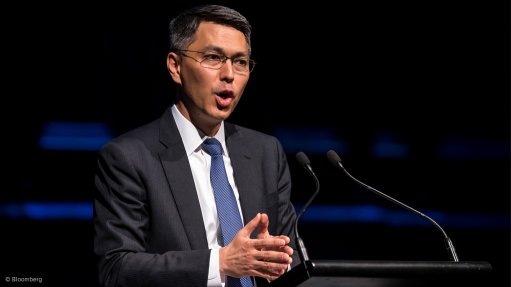
BHP Billiton’s president for the Australian minerals division, Mike Henry.
JOHANNESBURG (miningweekly.com) – Diversified mining group BHP Billiton is looking for $600-million in new savings from its coal business, which has already cut costs by $3-billion since 2012, the group reported on Tuesday, when it also announced an increase in its metallurgical coal production guidance for the 2016 financial year.
BHP Billiton’s president for the Australian minerals division, Mike Henry, who was briefing investors on the coal business, said that the $600-million in productivity gains would be achieved by the end of the 2017 financial year.
BHP Billiton’s coal business, which comprises coking coal mines in Queensland and thermal coal mines in New South Wales and Colombia, was in the enviable position of generating cash, despite depressed market conditions, which have resulted in many rivals’ operations being loss-making.
“While cost compression has been evident across the industry, we continue to work hard under our new operating model to improve our performance. Even in today’s difficult environment, all of our operations remain cash positive,” Henry said.
BHP Billiton has been focusing on lower costs, with its absolute cash costs about 25% below its 2012 costs, despite higher volumes. The group achieved a 56% reduction in unit costs at Queensland Coal and a 29% reduction in unit costs at New South Wales Energy Coal.
The Queensland coking coal unit cash costs were forecast to reduce further from $56/t in the 2016 financial year to $52/t in the 2017 financial year, while the New South Wales operations would lower unit cash costs from $44/t in the 2016 financial year to $38/t in the 2017 financial year.
PRODUCTION GUIDANCE
The world’s largest coking coal exporter believed market dynamics were improving, which supported its forecast for higher production volumes over the next three years.
BHP Billiton on Tuesday increased its metallurgical coal production guidance for the 2016 financial year to 43-million tonnes, from a previous estimate of 40-million tonnes, and said it would produce 44-million tonnes in the 2017 financial year and 46-million tonnes in the 2018 financial year.
“The developing world needs steel, steel needs coking coal and we have the strongest resource position in the seaborne market,” said Henry.
The company, however, lowered its energy coal guidance for the 2016 financial year to 34-million tonnes, from its April 2016 guidance of 37-million tonnes.
The New South Wales thermal coal mines were forecast to produce 17-million tonnes in the 2016 financial year, increasing to 19-million tonnes in the 2017 financial year and rising to 21-million tonnes in the 2018 financial year.
Thermal coal markets were expected to remain oversupplied in the near term, with China’s demand for imports likely to fall further owing to domestic oversupply.
Henry said that, against the backdrop of greater uncertainty in the outlook for thermal coal, the company was confident that base demand in emerging economies would remain resilient for decades to come.
Absolute demand for thermal coal was expected to increase by between 10% and 15% by the mid-2020s, despite a declining share in the global electricity generation fuel mix. BHP Billiton stated that India and South East Asia had 26% of the world’s population, but they only accounted for 13% of global electricity generation.